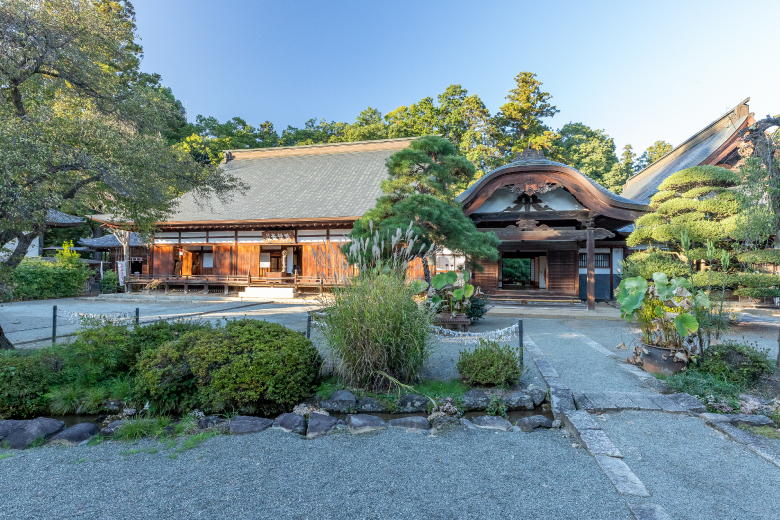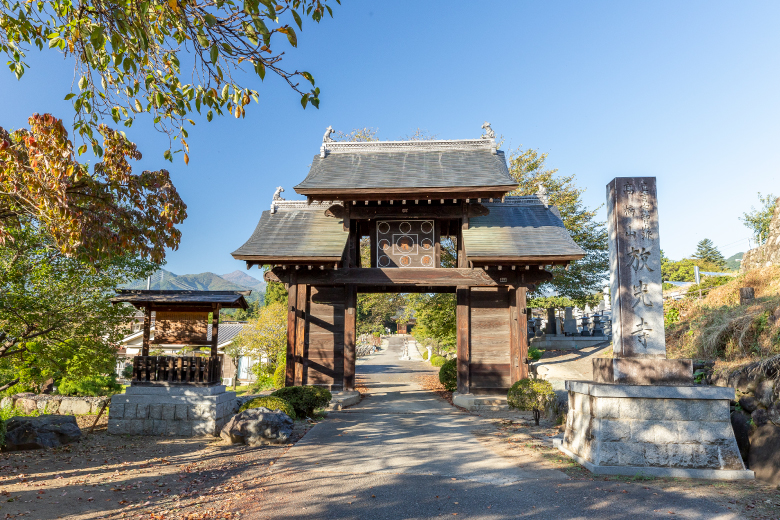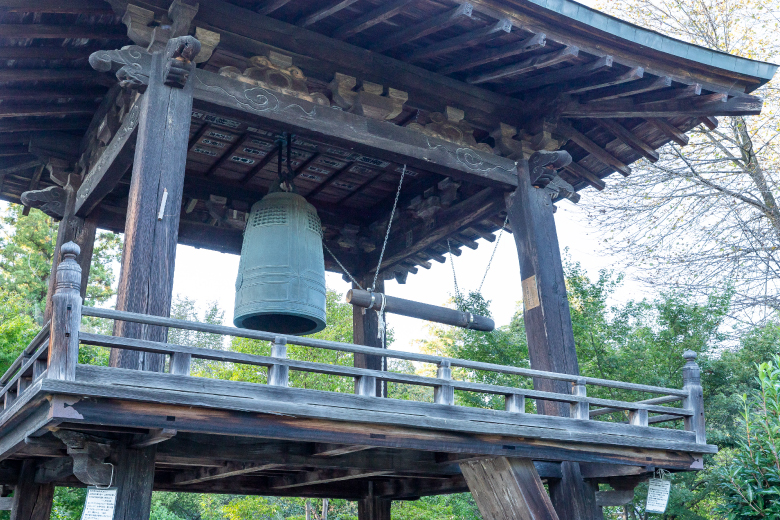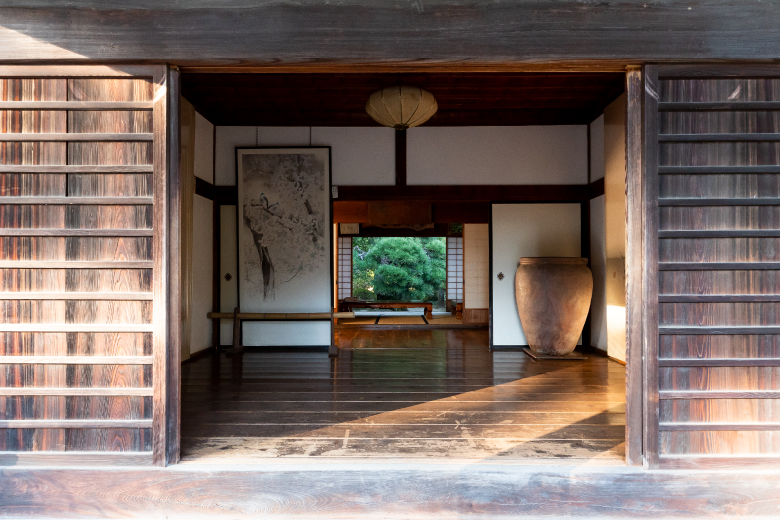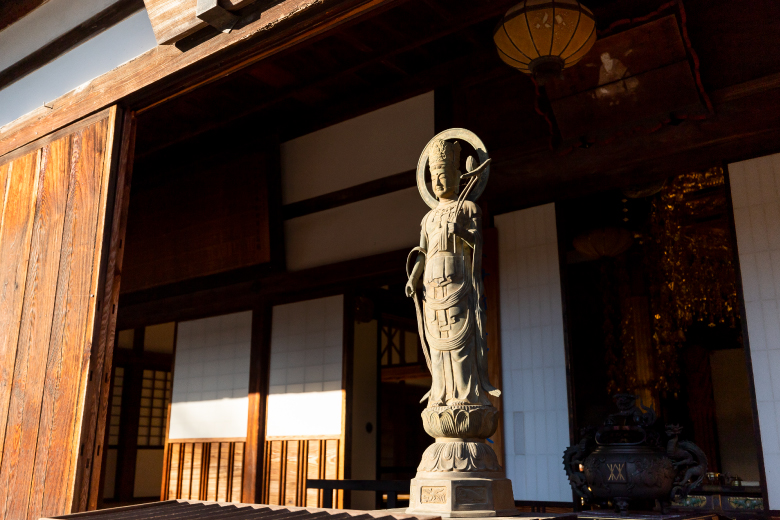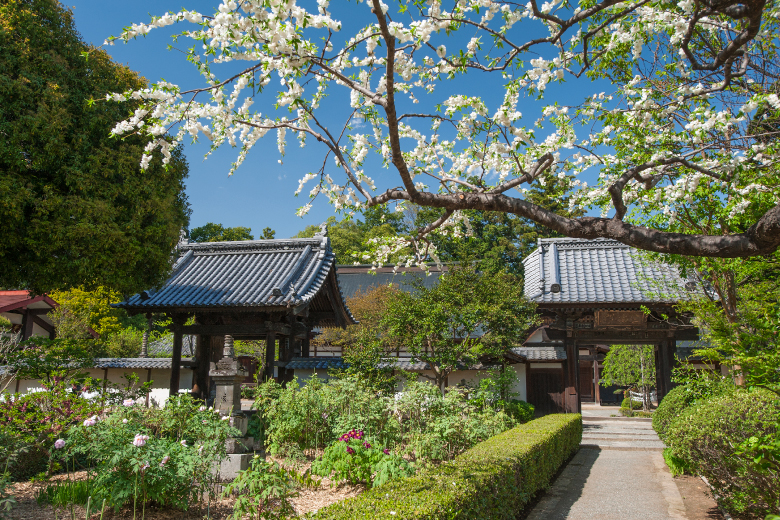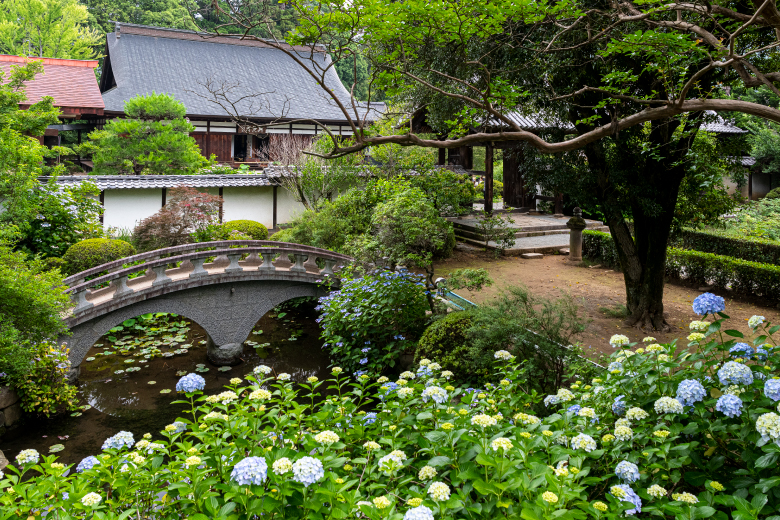Hoko-ji Temple is a Shingonshu sect temple founded in 1184 by Yasuda Yoshisada of the Kai Genji Clan after he rendered distinguished service in the Genpei War. The temple thereafter became the family temple of the Yasuda Clan. It prospered as a place of practice of Shingon Esoteric Buddhism since ancient times, and also served as Takeda Shingen’s place of prayer during the Warring States Period (1467–1603).
The main deities of the temple are a seated wooden statue of Dainichi Nyorai, a seated wooden statue of Aizen Myo-ou, and a wooden standing statue of Fudo Myo-ou. They are late Heian-era works of art that Yoshisada is said to have brought back with him from Kyoto, and are respectively a nationally designated Important Cultural Property.
Hoko-ji Temple is also known as a “flower temple” because beautiful flowers bloom on the temple grounds, providing a feast for people’s eyes every season with plum blossoms, camellia, cherry blossoms, peonies, hydrangeas, irises, and Yamabuki yellow roses.
Water from Koyashiki-zeki Dam on the Fuefuki River system flows through Hoko-ji Temple, creating a rich water garden.
The main deities of the temple are a seated wooden statue of Dainichi Nyorai, a seated wooden statue of Aizen Myo-ou, and a wooden standing statue of Fudo Myo-ou. They are late Heian-era works of art that Yoshisada is said to have brought back with him from Kyoto, and are respectively a nationally designated Important Cultural Property.
Hoko-ji Temple is also known as a “flower temple” because beautiful flowers bloom on the temple grounds, providing a feast for people’s eyes every season with plum blossoms, camellia, cherry blossoms, peonies, hydrangeas, irises, and Yamabuki yellow roses.
Water from Koyashiki-zeki Dam on the Fuefuki River system flows through Hoko-ji Temple, creating a rich water garden.
COURSE MAP
Let's go to the next spot!
- 140m / 1min by bicycle
- 09Nishifujiki Watermill
